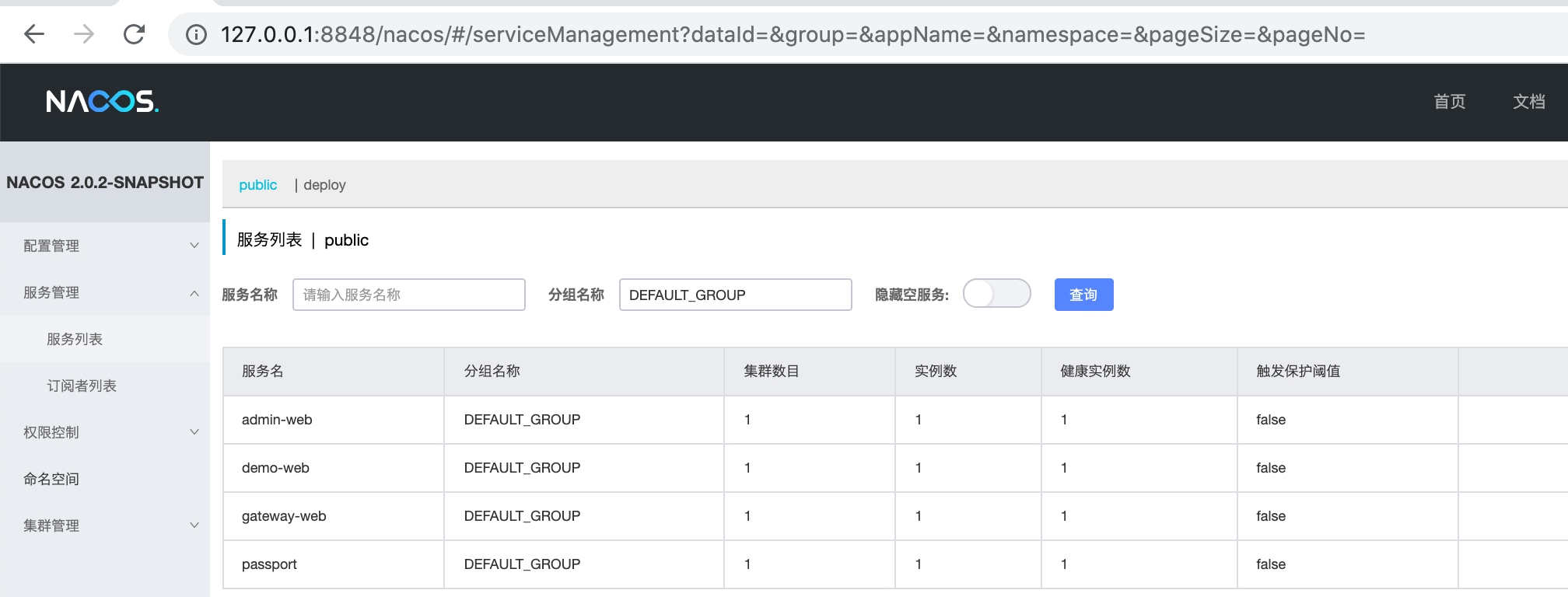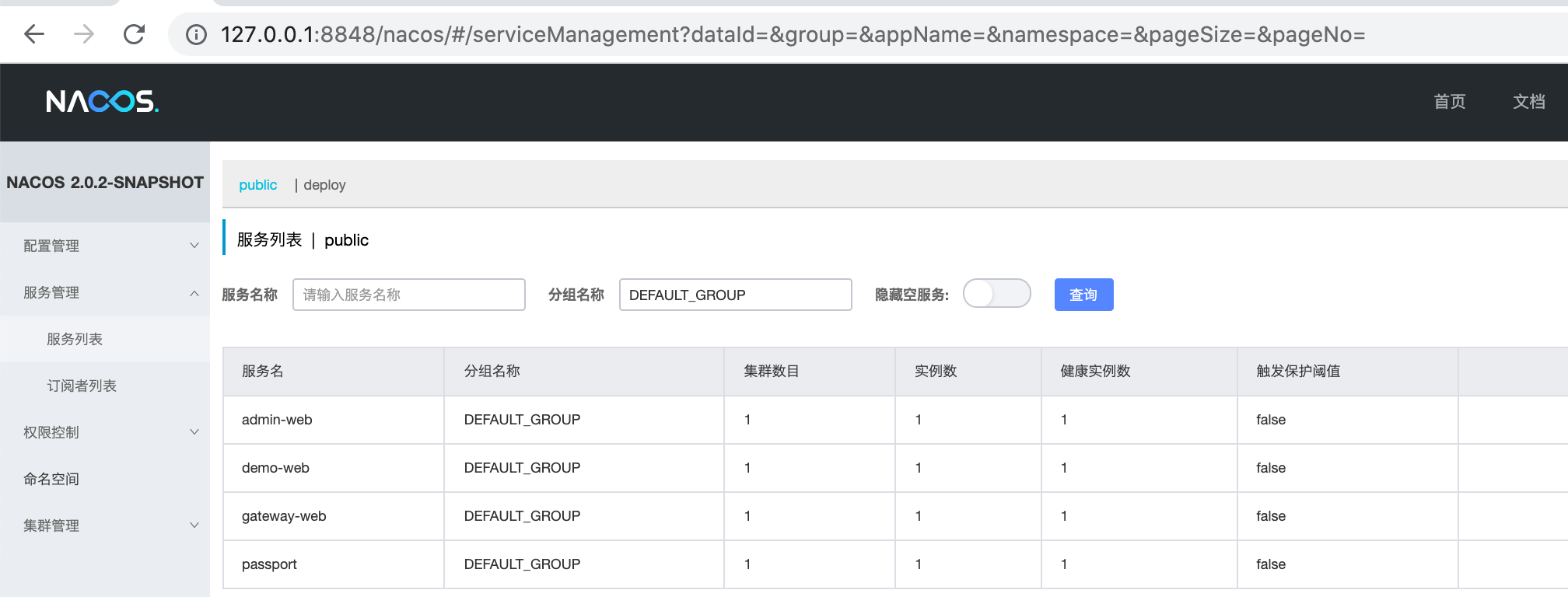Official git: https://github.com/spring-cloud/spring-cloud-gateway
Spring Cloud Gateway is used to replace zuul1 X as a gateway component in the microservice architecture, zuul1 X is the earliest gateway component. Due to the use of single thread blocking link, there is a performance problem. Gateway is a responsive gateway service built on the weblux framework, and the Netty framework is used as the communication framework at the bottom. zuul2.x also uses Netty. In terms of performance, the gateway is zuul1 1.5 ~ 2 times of X, and zuul2 X is equivalent.
We used 2021.1 version of spring cloud Alibaba and stepped on a small pit, as described below.
What is gateway
I personally understand that gateway is a business nginx. It supports many functions, such as request forwarding, load balancing, unified embedding point, current limiting and degradation, security authentication, etc. gateway collects all requests, forwards requests according to routing rules, and uses unified filters to process request parameters. Does it sound a bit like nginx, but it has more functions than nginx.
Three components of gateway

How to use
springcloud provides the springboot version initiator of gateway, which can easily create a gateway project
First, create a springboot project and introduce dependencies
<dependency> <groupId>org.springframework.cloud</groupId> <artifactId>spring-cloud-starter-gateway</artifactId> </dependency>
Modify application YML configuration
server:
port: 9000
spring:
application:
name: gateway-web
cloud:
gateway:
discovery:
routes:
- id: demo-1
uri: 127.0.0.1:9004
predicates:
- Path=/demo/** ##There are other routing rules based on Path matching
Integrating Nacos to realize dynamic routing
Introduce dependency
<dependency> <groupId>com.alibaba.cloud</groupId> <artifactId>spring-cloud-starter-alibaba-nacos-discovery</artifactId> </dependency> <!-- Spring Cloud 2020 Medium heavy recommended load balancer Spring Cloud LoadBalancer Dynamic routing cannot be realized without reference --> <dependency> <groupId>org.springframework.cloud</groupId> <artifactId>spring-cloud-starter-loadbalancer</artifactId> </dependency>
Modify application YML configuration
server:
port: 9000
spring:
application:
name: gateway-web
cloud:
gateway:
discovery:
routes:
- id: demo-1
uri: lb://Demo web ## 'LB: / /' represents the name of the 'demo web' service provider of the service found in the registry
predicates:
- Path=/demo/**
nacos:
discovery:
server-addr: 127.0.0.1:8848
password: nacos
username: nacos
Add service discovery annotation to startup class
@SpringBootApplication
@EnableDiscoveryClient
public class GatewayWebApplication {
public static void main(String[] args) {
SpringApplication.run(GatewayWebApplication.class, args);
}
}
The gateway service can be found from nacos

Automatic configuration of routes based on dynamic service routing
Modify application YML configuration
server:
port: 9000
spring:
application:
name: gateway-web
cloud:
gateway:
discovery:
locator:
enabled: true ##Turn on auto discovery
lower-case-service-id: true ##Turn lowercase
# routes:
# - id: demo-1
# uri: lb://demo-web
# predicates:
# - Path=/demo/**
nacos:
discovery:
server-addr: 127.0.0.1:8848
password: nacos
username: nacos
Note that when accessing the service, you need to add a level of resources with the service name as the path
For example: http://127.0.0.1:9004/demo/userinfo
To access http://127.0.0.1:9004/demo -Web / demo / userinfo demo is the name of the web service provider

2021.1 version stepping pit
Many online tutorials don't suggest the need to introduce spring cloud starter loadbalance. Maybe the articles are old. Loadbalance is the load balancer provided in 2020 version, which is used by default. Therefore, if you don't reference it, you won't reverse the implementation of dynamic routing. There's not even a log, which makes me debug for half a day.
Several important components in service forwarding:
Dispatcher handler entry
@Override
public Mono<Void> handle(ServerWebExchange exchange) {
if (this.handlerMappings == null) {
return createNotFoundError();
}
return Flux.fromIterable(this.handlerMappings)
.concatMap(mapping -> mapping.getHandler(exchange))
.next()
.switchIfEmpty(createNotFoundError())
.flatMap(handler -> invokeHandler(exchange, handler))
.flatMap(result -> handleResult(exchange, result));
}
Routepredictehandlermapping is responsible for obtaining all routing rules
@Override
protected Mono<?> getHandlerInternal(ServerWebExchange exchange) {
// don't handle requests on management port if set and different than server port
if (this.managementPortType == DIFFERENT && this.managementPort != null
&& exchange.getRequest().getURI().getPort() == this.managementPort) {
return Mono.empty();
}
exchange.getAttributes().put(GATEWAY_HANDLER_MAPPER_ATTR, getSimpleName());
return lookupRoute(exchange)
// .log("route-predicate-handler-mapping", Level.FINER) //name this
.flatMap((Function<Route, Mono<?>>) r -> {
exchange.getAttributes().remove(GATEWAY_PREDICATE_ROUTE_ATTR);
if (logger.isDebugEnabled()) {
logger.debug("Mapping [" + getExchangeDesc(exchange) + "] to " + r);
}
exchange.getAttributes().put(GATEWAY_ROUTE_ATTR, r);
return Mono.just(webHandler);
}).switchIfEmpty(Mono.empty().then(Mono.fromRunnable(() -> {
exchange.getAttributes().remove(GATEWAY_PREDICATE_ROUTE_ATTR);
if (logger.isTraceEnabled()) {
logger.trace("No RouteDefinition found for [" + getExchangeDesc(exchange) + "]");
}
})));
}
FilteringWebHandler executes the filter chain
@Override
public Mono<Void> handle(ServerWebExchange exchange) {
Route route = exchange.getRequiredAttribute(GATEWAY_ROUTE_ATTR);
List<GatewayFilter> gatewayFilters = route.getFilters();
List<GatewayFilter> combined = new ArrayList<>(this.globalFilters);
combined.addAll(gatewayFilters);
// TODO: needed or cached?
AnnotationAwareOrderComparator.sort(combined);
if (logger.isDebugEnabled()) {
logger.debug("Sorted gatewayFilterFactories: " + combined);
}
return new DefaultGatewayFilterChain(combined).filter(exchange);
}
Routetorequestrulfilter is responsible for converting URLs according to routing rules
@Override
public Mono<Void> filter(ServerWebExchange exchange, GatewayFilterChain chain) {
Route route = exchange.getAttribute(GATEWAY_ROUTE_ATTR);
if (route == null) {
return chain.filter(exchange);
}
log.trace("RouteToRequestUrlFilter start");
URI uri = exchange.getRequest().getURI();
boolean encoded = containsEncodedParts(uri);
URI routeUri = route.getUri();
if (hasAnotherScheme(routeUri)) {
// this is a special url, save scheme to special attribute
// replace routeUri with schemeSpecificPart
exchange.getAttributes().put(GATEWAY_SCHEME_PREFIX_ATTR, routeUri.getScheme());
routeUri = URI.create(routeUri.getSchemeSpecificPart());
}
if ("lb".equalsIgnoreCase(routeUri.getScheme()) && routeUri.getHost() == null) {
// Load balanced URIs should always have a host. If the host is null it is
// most
// likely because the host name was invalid (for example included an
// underscore)
throw new IllegalStateException("Invalid host: " + routeUri.toString());
}
URI mergedUrl = UriComponentsBuilder.fromUri(uri)
// .uri(routeUri)
.scheme(routeUri.getScheme()).host(routeUri.getHost()).port(routeUri.getPort()).build(encoded).toUri();
exchange.getAttributes().put(GATEWAY_REQUEST_URL_ATTR, mergedUrl);
return chain.filter(exchange);
}
ReactiveLoadBalancerClientFilter is responsible for load balancing remote distributed services
Previously, LoadBalancerClientFilter was used
@Override
public Mono<Void> filter(ServerWebExchange exchange, GatewayFilterChain chain) {
URI url = exchange.getAttribute(GATEWAY_REQUEST_URL_ATTR);
String schemePrefix = exchange.getAttribute(GATEWAY_SCHEME_PREFIX_ATTR);
if (url == null || (!"lb".equals(url.getScheme()) && !"lb".equals(schemePrefix))) {
return chain.filter(exchange);
}
// preserve the original url
addOriginalRequestUrl(exchange, url);
if (log.isTraceEnabled()) {
log.trace(ReactiveLoadBalancerClientFilter.class.getSimpleName() + " url before: " + url);
}
URI requestUri = exchange.getAttribute(GATEWAY_REQUEST_URL_ATTR);
String serviceId = requestUri.getHost();
Set<LoadBalancerLifecycle> supportedLifecycleProcessors = LoadBalancerLifecycleValidator
.getSupportedLifecycleProcessors(clientFactory.getInstances(serviceId, LoadBalancerLifecycle.class),
RequestDataContext.class, ResponseData.class, ServiceInstance.class);
DefaultRequest<RequestDataContext> lbRequest = new DefaultRequest<>(new RequestDataContext(
new RequestData(exchange.getRequest()), getHint(serviceId, loadBalancerProperties.getHint())));
return choose(lbRequest, serviceId, supportedLifecycleProcessors).doOnNext(response -> {
if (!response.hasServer()) {
supportedLifecycleProcessors.forEach(lifecycle -> lifecycle
.onComplete(new CompletionContext<>(CompletionContext.Status.DISCARD, lbRequest, response)));
throw NotFoundException.create(properties.isUse404(), "Unable to find instance for " + url.getHost());
}
ServiceInstance retrievedInstance = response.getServer();
URI uri = exchange.getRequest().getURI();
// if the `lb:<scheme>` mechanism was used, use `<scheme>` as the default,
// if the loadbalancer doesn't provide one.
String overrideScheme = retrievedInstance.isSecure() ? "https" : "http";
if (schemePrefix != null) {
overrideScheme = url.getScheme();
}
DelegatingServiceInstance serviceInstance = new DelegatingServiceInstance(retrievedInstance,
overrideScheme);
URI requestUrl = reconstructURI(serviceInstance, uri);
if (log.isTraceEnabled()) {
log.trace("LoadBalancerClientFilter url chosen: " + requestUrl);
}
exchange.getAttributes().put(GATEWAY_REQUEST_URL_ATTR, requestUrl);
exchange.getAttributes().put(GATEWAY_LOADBALANCER_RESPONSE_ATTR, response);
supportedLifecycleProcessors.forEach(lifecycle -> lifecycle.onStartRequest(lbRequest, response));
}).then(chain.filter(exchange))
.doOnError(throwable -> supportedLifecycleProcessors.forEach(lifecycle -> lifecycle
.onComplete(new CompletionContext<ResponseData, ServiceInstance, RequestDataContext>(
CompletionContext.Status.FAILED, throwable, lbRequest,
exchange.getAttribute(GATEWAY_LOADBALANCER_RESPONSE_ATTR)))))
.doOnSuccess(aVoid -> supportedLifecycleProcessors.forEach(lifecycle -> lifecycle
.onComplete(new CompletionContext<ResponseData, ServiceInstance, RequestDataContext>(
CompletionContext.Status.SUCCESS, lbRequest,
exchange.getAttribute(GATEWAY_LOADBALANCER_RESPONSE_ATTR),
new ResponseData(exchange.getResponse(), new RequestData(exchange.getRequest()))))));
}
NettyRoutingFilter is responsible for sending requests using HttpClient for communication
@Override
@SuppressWarnings("Duplicates")
public Mono<Void> filter(ServerWebExchange exchange, GatewayFilterChain chain) {
URI requestUrl = exchange.getRequiredAttribute(GATEWAY_REQUEST_URL_ATTR);
String scheme = requestUrl.getScheme();
if (isAlreadyRouted(exchange) || (!"http".equals(scheme) && !"https".equals(scheme))) {
return chain.filter(exchange);
}
setAlreadyRouted(exchange);
ServerHttpRequest request = exchange.getRequest();
final HttpMethod method = HttpMethod.valueOf(request.getMethodValue());
final String url = requestUrl.toASCIIString();
HttpHeaders filtered = filterRequest(getHeadersFilters(), exchange);
final DefaultHttpHeaders httpHeaders = new DefaultHttpHeaders();
filtered.forEach(httpHeaders::set);
boolean preserveHost = exchange.getAttributeOrDefault(PRESERVE_HOST_HEADER_ATTRIBUTE, false);
Route route = exchange.getAttribute(GATEWAY_ROUTE_ATTR);
Flux<HttpClientResponse> responseFlux = getHttpClient(route, exchange).headers(headers -> {
headers.add(httpHeaders);
// Will either be set below, or later by Netty
headers.remove(HttpHeaders.HOST);
if (preserveHost) {
String host = request.getHeaders().getFirst(HttpHeaders.HOST);
headers.add(HttpHeaders.HOST, host);
}
}).request(method).uri(url).send((req, nettyOutbound) -> {
if (log.isTraceEnabled()) {
nettyOutbound.withConnection(connection -> log.trace("outbound route: "
+ connection.channel().id().asShortText() + ", inbound: " + exchange.getLogPrefix()));
}
return nettyOutbound.send(request.getBody().map(this::getByteBuf));
}).responseConnection((res, connection) -> {
// Defer committing the response until all route filters have run
// Put client response as ServerWebExchange attribute and write
// response later NettyWriteResponseFilter
exchange.getAttributes().put(CLIENT_RESPONSE_ATTR, res);
exchange.getAttributes().put(CLIENT_RESPONSE_CONN_ATTR, connection);
ServerHttpResponse response = exchange.getResponse();
// put headers and status so filters can modify the response
HttpHeaders headers = new HttpHeaders();
res.responseHeaders().forEach(entry -> headers.add(entry.getKey(), entry.getValue()));
String contentTypeValue = headers.getFirst(HttpHeaders.CONTENT_TYPE);
if (StringUtils.hasLength(contentTypeValue)) {
exchange.getAttributes().put(ORIGINAL_RESPONSE_CONTENT_TYPE_ATTR, contentTypeValue);
}
setResponseStatus(res, response);
// make sure headers filters run after setting status so it is
// available in response
HttpHeaders filteredResponseHeaders = HttpHeadersFilter.filter(getHeadersFilters(), headers, exchange,
Type.RESPONSE);
if (!filteredResponseHeaders.containsKey(HttpHeaders.TRANSFER_ENCODING)
&& filteredResponseHeaders.containsKey(HttpHeaders.CONTENT_LENGTH)) {
// It is not valid to have both the transfer-encoding header and
// the content-length header.
// Remove the transfer-encoding header in the response if the
// content-length header is present.
response.getHeaders().remove(HttpHeaders.TRANSFER_ENCODING);
}
exchange.getAttributes().put(CLIENT_RESPONSE_HEADER_NAMES, filteredResponseHeaders.keySet());
response.getHeaders().putAll(filteredResponseHeaders);
return Mono.just(res);
});
Duration responseTimeout = getResponseTimeout(route);
if (responseTimeout != null) {
responseFlux = responseFlux
.timeout(responseTimeout,
Mono.error(new TimeoutException("Response took longer than timeout: " + responseTimeout)))
.onErrorMap(TimeoutException.class,
th -> new ResponseStatusException(HttpStatus.GATEWAY_TIMEOUT, th.getMessage(), th));
}
return responseFlux.then(chain.filter(exchange));
}
NettyWriteResponseFilter process response
@Override
public Mono<Void> filter(ServerWebExchange exchange, GatewayFilterChain chain) {
// NOTICE: nothing in "pre" filter stage as CLIENT_RESPONSE_CONN_ATTR is not added
// until the NettyRoutingFilter is run
// @formatter:off
return chain.filter(exchange)
.doOnError(throwable -> cleanup(exchange))
.then(Mono.defer(() -> {
Connection connection = exchange.getAttribute(CLIENT_RESPONSE_CONN_ATTR);
if (connection == null) {
return Mono.empty();
}
if (log.isTraceEnabled()) {
log.trace("NettyWriteResponseFilter start inbound: "
+ connection.channel().id().asShortText() + ", outbound: "
+ exchange.getLogPrefix());
}
ServerHttpResponse response = exchange.getResponse();
// TODO: needed?
final Flux<DataBuffer> body = connection
.inbound()
.receive()
.retain()
.map(byteBuf -> wrap(byteBuf, response));
MediaType contentType = null;
try {
contentType = response.getHeaders().getContentType();
}
catch (Exception e) {
if (log.isTraceEnabled()) {
log.trace("invalid media type", e);
}
}
return (isStreamingMediaType(contentType)
? response.writeAndFlushWith(body.map(Flux::just))
: response.writeWith(body));
})).doOnCancel(() -> cleanup(exchange));
// @formatter:on
}